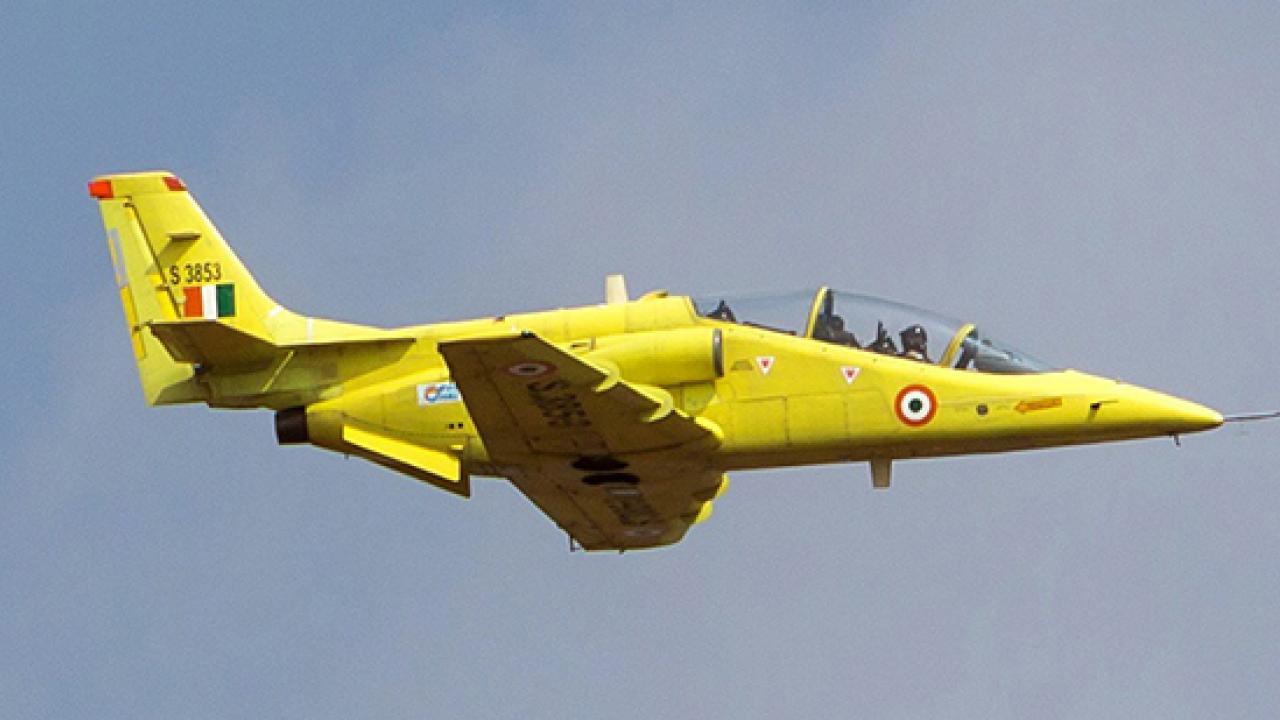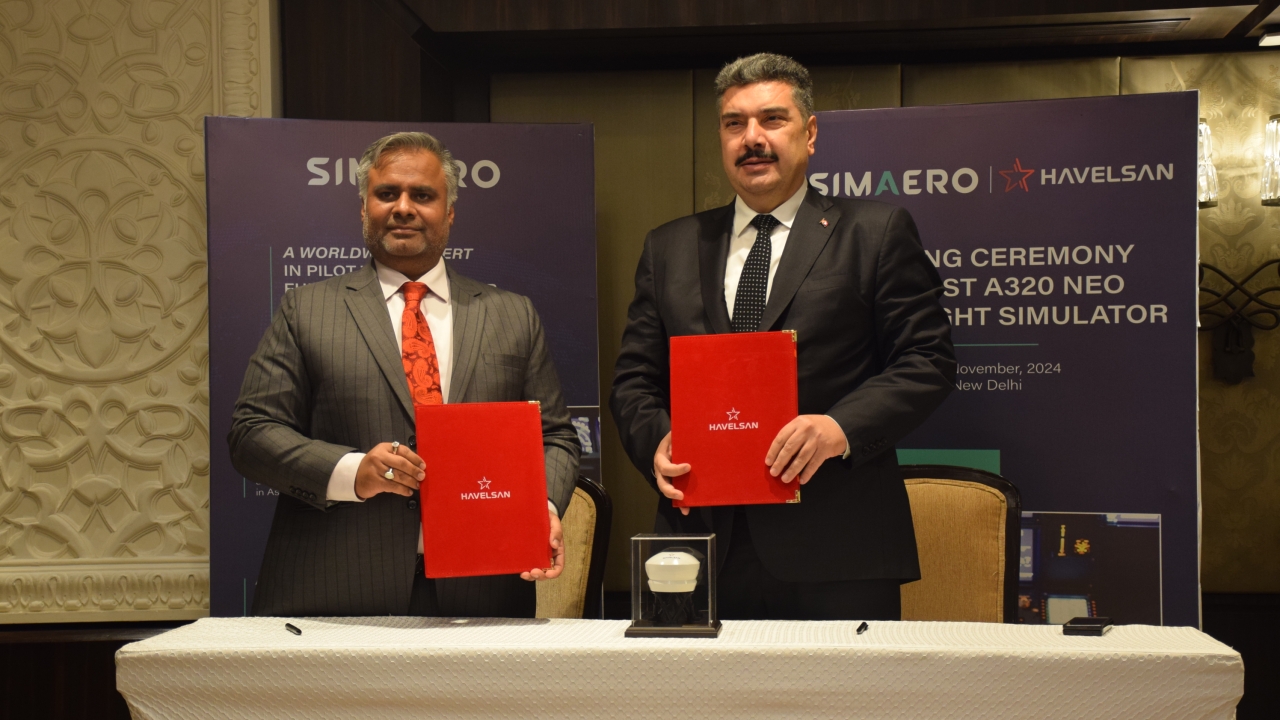TRAINING: India Gets Two AL-55I Engines for Combat Trainers

The aircraft maker Hindustan Aeronautics Ltd. has received two AL-55I turbojet engines delivered by Russia's United Engine Corporation (UEC) in July reports Jay Menon.
UEC said it has completed work to increase the resource performance of the two delivered engines to 300 hours. During the course of the work, the life of the AL-55I two-circuit turbojet engine design was gradually increased.
“The engine’s service life was gradually increased during the project based on the UEC-Saturn facility. First from 100 to 300 hours, then to 600, 900 and now up to 1,200 hours. During this time, the AL-55I engines have been running for over 5000 hours at the test stands, and passed 4500 equivalent tests cycles,” a company official informed.
After successful acceptance tests at the test stand in the presence of the customer's representative, the engines have been shipped to India.
The establishment of the HJT-36 training aircraft is in the final stage of flight certification testing, which must confirm the compliance of the HJT-36 aircraft with the requirements of the Indian Air Force.
“Engines with increased service life will be used to complete this stage. The installed service life guarantees the reliable operation of the engine for a specified time. There are also plans to increase the resource indicators for 16 AL-55I engines already supplied to HAL earlier,” said Yuri Shmotin, Deputy Director General and the General Designer of the UDC.
“Besides, considerable work has been carried out to arrange the licensed production of AL-55I engines at HAL’s enterprises," he added.
With its modular design, the engine provides high performance efficiency, manufacturability and low cost of operation. The engine’s advanced digital control system ensures safe piloting and easy maintenance. The engine has a traction index at a maximum mode of 1760 kilogram force. The service life of the engine was recently increased to 1,200 flight hours.
In February this year, a HJT-36 trainer, powered by the AL-55I jet engine, took off successfully. The event took place during the international aerospace exhibition Aero India, in Bengaluru.
“The AL-55I power plant installed on HJT-36 meets all latest requirements for safety, reliability and performance, which is extremely important when teaching cadets. The engine’s service life parameters have been confirmed, and now we can move to its licensed serial assembly,” said the Director for International Cooperation and Regional Policy of Rostec State Corporation Viktor Kladov.
Among various tests with the power plants are performance tests when being struck by foreign objects, such as birds or hail, and several specialised tests for confirming calculated parameters. The performance of the engine was confirmed under varying weather conditions.
Due to its unique design that combines high performance with longevity, the AL-55I engine and the HJT-36 aircraft it powers have great potential to reinforce the Indian Air Force, Kladov noted.
HJT-36 is a subsonic intermediate jet trainer aircraft and is design and developed by Aircraft Research and Design Centre (ARDC) and built by HAL for the Indian Air Force and the Indian Navy. The intermediate jet trainer, known in India as the Sitara ('Star').
The IAF, which has been struggling to fill the gaps of trainer aircraft for years. The IAF has 310 trainer aircraft — more than 100 less than the sanctioned number of 432, a parliamentary panel report revealed earlier this February.
The HJT-36 is to replace ageing fleet of Kiran Jet Trainer aircraft in service with Indian Air Force for Stage II training of its pilots. IJT incorporates the simplicity necessary for ease of conversion from Basic Piston Trainer and the sophistication required for quick conversion to the complexities of an Advanced Jet Trainer. However, there has been no indication from the IAF about a possible order for the IJT aircraft.
An HAL official said efforts are on to convince and persuade the IAF to purchase the aircraft. The inordinate delays in the IJT developmental programme has compelled the IAF to reconfigure its training regimen, which now sees rookie pilots get their basic and intermediate training on PC-7 Mk.II propeller trainers and advanced and lead-in training on HAL-built Hawk Mk.132 aircraft. The IAF has actively weaned training elements away from the ageing HJT-16 Kiran jets, though these platforms are used occasionally for training.
In mid-2019, HAL recommenced flight testing of the modified IJT from its Bengaluru facilities. Flight testing was put on hold after the aircraft had encountered problem in the spin test flights in the year 2016.
“HAL continued its R&D efforts and undertook modification of IJT LSP4 aircraft based on extensive and comprehensive wind tunnel studies”, says R. Madhavan, chairman and managing director of HAL.
The HAL has also been conducting crucial developmental tests of IJT Sitara. Currently, the spin flight testing of the single-engine aircraft is progressing. The spin testing of an aircraft is the most crucial phase of its flight testing. The testing will be gradually progressed to assess the behaviour of the aircraft till six turn spins to either side to meet the targeted requirements.
Two prototypes of IJT were built after the project kicked off in 1999. But despite its maiden flight in 2003, the project was plagued by delays. It suffered the first big setback when one of the prototypes went off the runway as thousands watched at the Yelahanka Air Base in Bengaluru during Aero India 2007.
The second prototype suffered another mishap during a test sortie. This flight test was critical since its success would have
helped the project progress to the Initial Operational Clearance stage.
Capable of training pilots in air to air, air to land and waypoint navigation, the HJT-36 boasts a composite body, a modern full glass cockpit, zero-zero ejection seats and modern avionics. It can carry a ton of armament in the form of podded guns, within visual range air to air missiles, rockets and anti-tank missiles. This makes it an effective solution against a variety of targets such as unmanned aerial vehicles, and tanks, for which a supersonic fighter aircraft would be an overkill.
Stay up to date
Subscribe to the free Times Aerospace newsletter and receive the latest content every week. We'll never share your email address.

